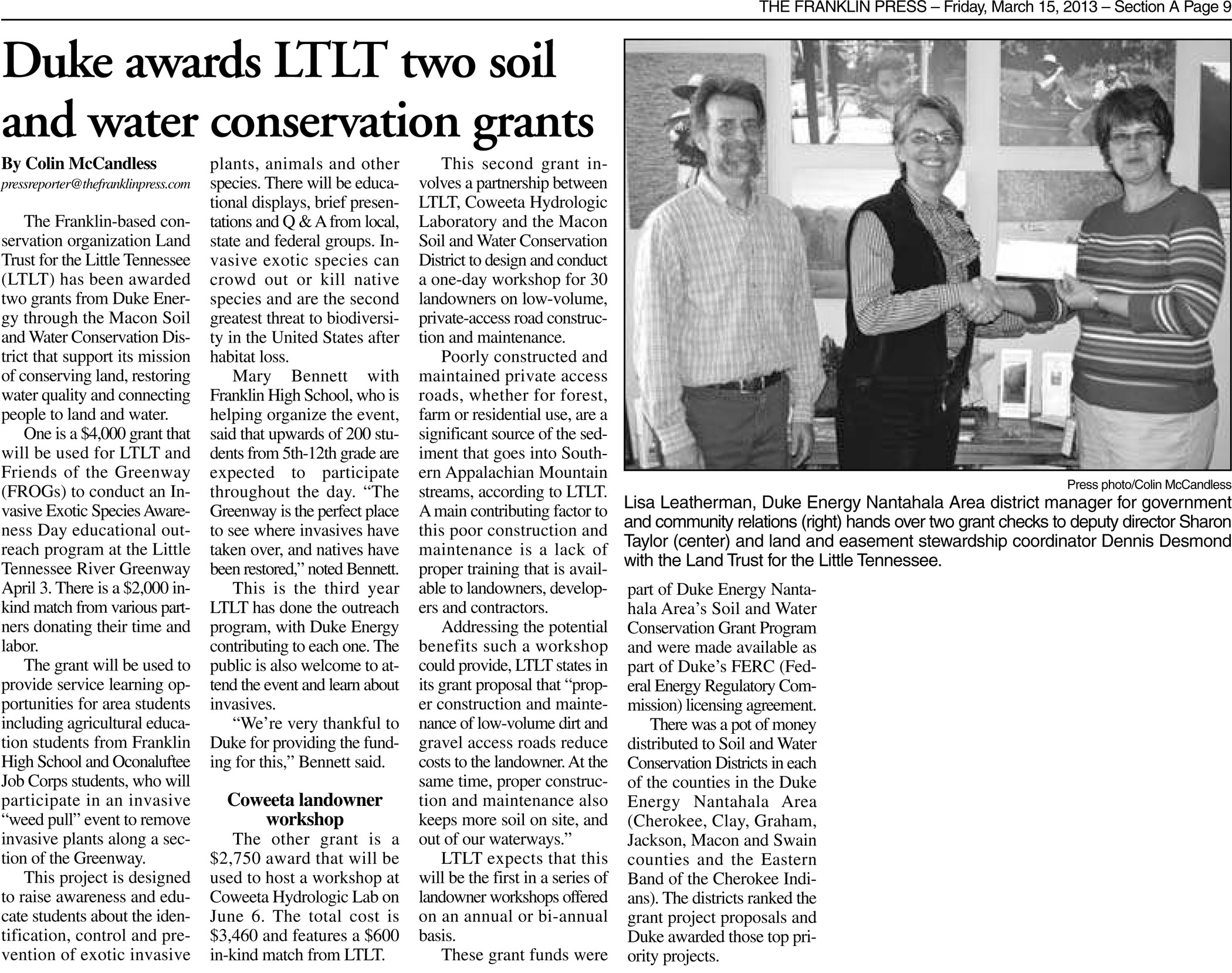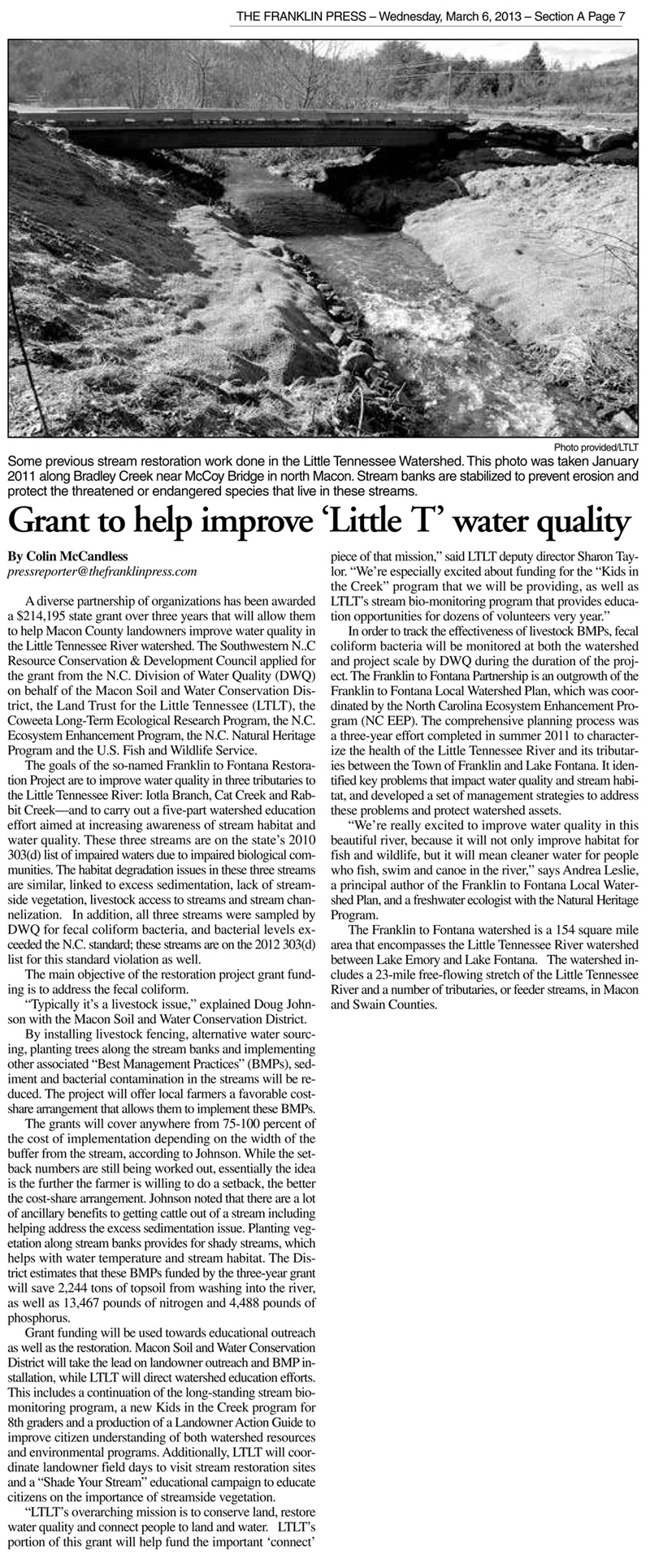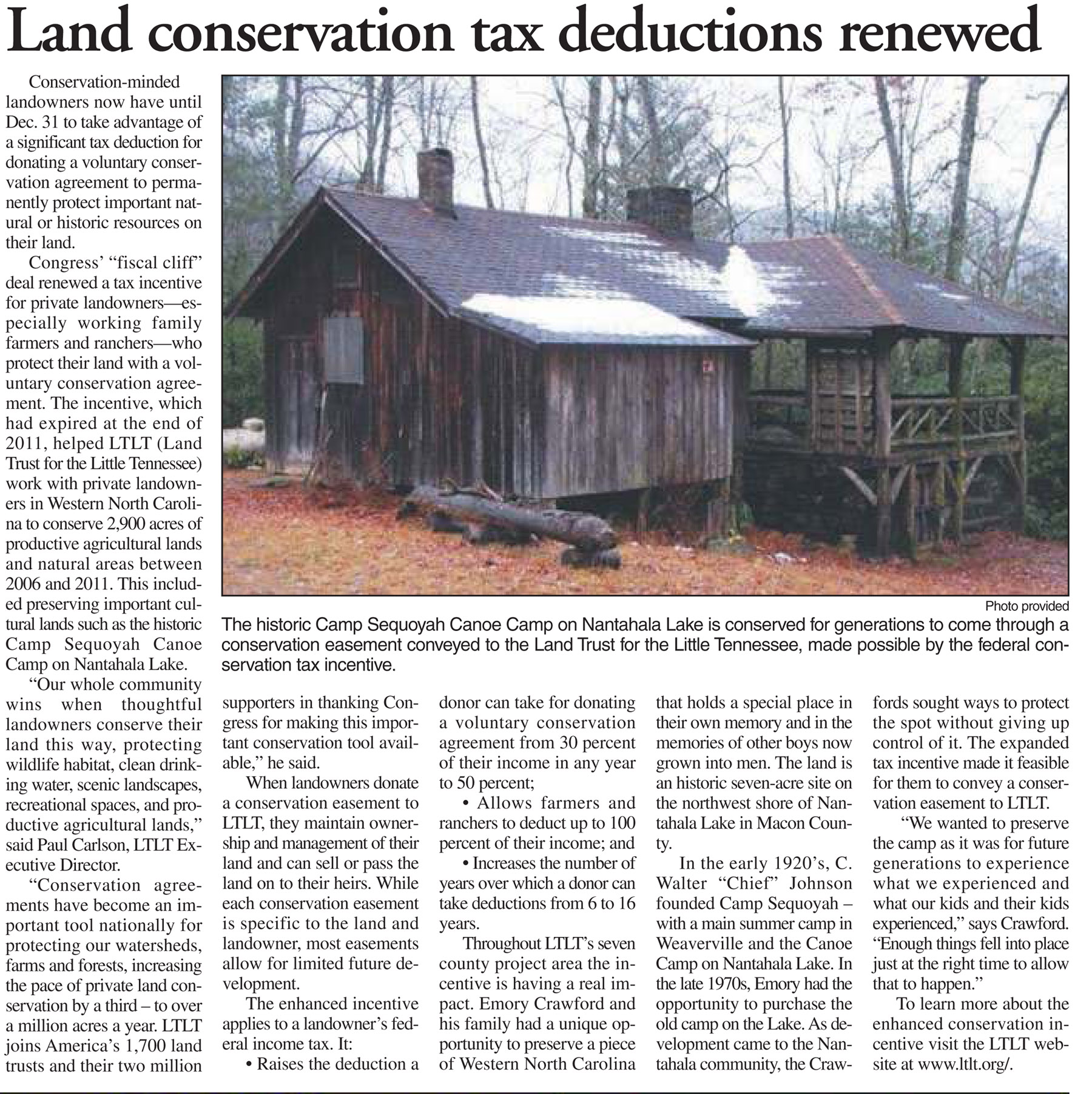An article by Colin McCandless in The Franklin Press Friday, March 15, 2013 gives details of the two Duke Energy grants recently awarded to LTLT. One grant will fund an Exotic Species Awareness Day educational outreach program conducted by LTLT and Friends of the Greenway (FROGs), and service learning opportunities for area students. The other will be used to hose a workshop at Coweeta Hydrologic Lab in June.
The Franklin Press: “Grant to help improve ‘Little T’ water quality”
An article by Colin McCandless of The Franklin Press (March 6, 2013) featured coverage of a state grant that was recently awarded to the Franklin to Fontana Restoration Project partnership of organizations (including LTLT) that will allow them to help Macon County landowners improve water quality in the Little Tennessee River watershed. LTLT will direct the watershed education efforts associated with the grant. Thanks to Franklin Press for getting the word out about this great step forward for streambank restoration and water quality improvement!
The Franklin Press: “Conservation tax deductions renewed”
The Franklin Press of March 1, 2013 featured coverage of the renewed conservation tax incentives for landowners, as well as LTLT’s work with landowners to conserve their land. View the full article below. Thanks to the Franklin press for spreading the news about this great tax incentive!
- « Previous Page
- 1
- …
- 47
- 48
- 49
- 50
- 51
- …
- 65
- Next Page »




